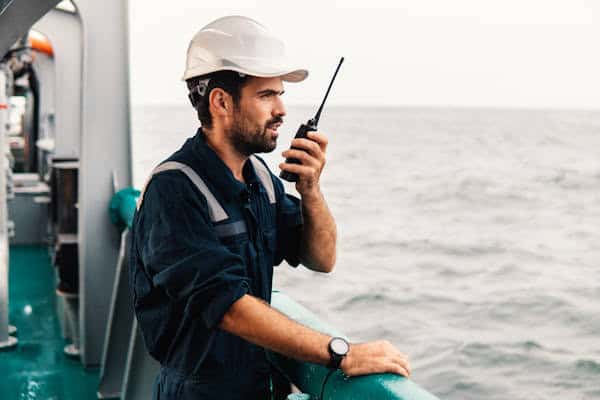10 Low-Cost Psychological Deterrents to Combat Maritime Piracy

Using low-cost, easy-to-deploy psychological deterrents offers a smart and cost-effective way to enhance maritime security without breaking the bank. Below are strategies that play on the perceptions and fears of potential pirates, creating an illusion of high risk and low reward for targeting a vessel. By leveraging the power of suggestion, such as simulated security presence or misleading signals of strength, ships can significantly reduce the likelihood of being targeted. This approach not only saves money on expensive security measures but also minimizes the risk of direct confrontations, making the seas a safer place for everyone. It’s a clever way to outsmart potential threats while keeping costs low and efficiency high.
* Please send feedback/suggestions to editor @ shipuniverse.com
- Fake Crew Activity: Use mannequins or dummies dressed in security uniforms placed strategically around the ship to create the illusion of a larger security presence on board. This can deter pirates by making them believe the ship is better guarded than it actually is.
- Warning Broadcasts: Implement a loudspeaker system to broadcast pre-recorded messages in multiple languages warning of the ship’s preparedness to deal with piracy. These messages can include warnings about legal repercussions, the presence of armed guards (whether real or not), and the ship’s alleged cooperation with nearby naval forces.
- Strategic Lighting: Enhance ship lighting during night or in piracy-prone areas to give the impression of vigilance and readiness. Bright, strategic lighting can make it difficult for pirates to approach undetected and may discourage attempts due to increased visibility.
- Fake Weapons Systems: Install realistic-looking dummy weapons on visible parts of the ship. These could be models of machine guns, cannons, or even missile launchers, intended to create the illusion of heavy armament, thereby deterring pirate approaches.
- Psychological Signage: Place signs at potential entry points and along the ship’s perimeter indicating that the ship is protected by security measures, monitored by surveillance, or even that it carries no valuable cargo. Some signs could also falsely claim the ship is carrying hazardous materials as an additional deterrent.
- Distress Signal Devices: Equip the ship with easily accessible ‘panic buttons’ that, when pressed, trigger loud alarms and flashing lights, simulating the activation of an emergency response system. This could make pirates believe that an immediate military or security force response is imminent. Play recordings of sounds that are universally alarming or distressing (e.g., sirens, alarms, or even recorded shouts for help) over loudspeakers to create confusion and fear among pirates as they approach.
- False Radio Chatter: Use the ship’s communication systems to broadcast fake radio communications indicating imminent support from nearby military or security forces. This could involve pre-recorded messages or live, scripted conversations between the crew designed to be overheard by pirates.
- False Security Cameras: Mount an increased number of visible security cameras around the ship, including dummy cameras, to give the impression of comprehensive surveillance, even in areas not actually monitored.
- Rumor Campaigns: Spread rumors through local maritime networks about the ship being an undesirable target, either due to its strong security measures, lack of valuable cargo, or even support from local authorities and naval forces.
- Visual Decoys: Paint the ship with fake gun ports or security features to make it appear more formidable. This simple visual trick can make pirates second-guess the risk of engaging with the ship.
When it comes to ramping up maritime security, there are several more expensive but highly effective options for deterring pirates. Investing in advanced surveillance systems, such as drones and radar technology, provides real-time intelligence about potential threats, allowing crews to respond proactively. Hiring armed security personnel to travel onboard adds a layer of physical defense that can dissuade pirates from attempting an attack. Additionally, installing reinforced safe rooms or citadels offers a secure last resort for crew members in the event of a boarding. While these measures come with a higher price tag, they offer peace of mind and a robust defense against piracy, ensuring the safety of both the crew and the cargo. For shipping companies operating in high-risk areas, these investments can be invaluable, significantly reducing the risk of piracy incidents and the associated costs.
Discover Your Ideal Anti-Piracy Solutions Today

Do you have a Maritime Product or Service that may be of interest to Shipowners? Tell us about it here!
Do you have feedback or insights? Please reach out to editor @ shipuniverse.com



